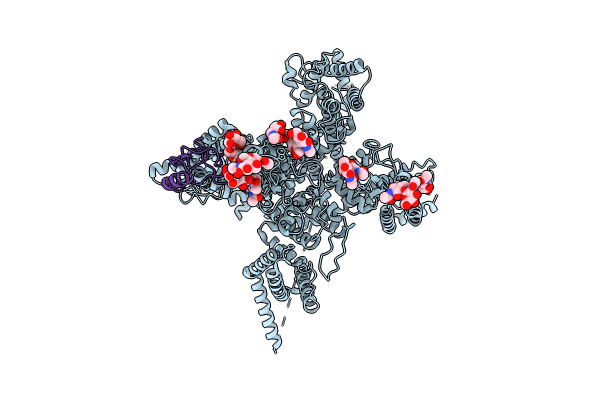
Deposition Date
2024-01-18
Release Date
2024-09-04
Last Version Date
2024-11-13
Entry Detail
PDB ID:
8VQC
Keywords:
Title:
Structure of the voltage-gated sodium channel NavPas from American Cockroach Periplaneta Americana in complex with scorpion alpha-toxin LqhaIT
Biological Source:
Source Organism:
Periplaneta americana (Taxon ID: 6978)
Leiurus quinquestriatus hebraeus (Taxon ID: 6884)
Leiurus quinquestriatus hebraeus (Taxon ID: 6884)
Host Organism:
Method Details:
Experimental Method:
Resolution:
3.90 Å
Aggregation State:
PARTICLE
Reconstruction Method:
SINGLE PARTICLE


